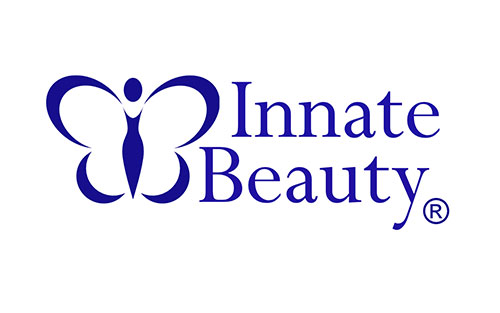Women’s Health
If you were to travel back in time to give your younger self some life wisdom, what would it be? Wear sunblock, instead of laying out with baby oil and iodine. Get plenty of sleep. Eat three square meals a day. Drink in moderation. Exercise regularly. Brush and floss twice a day. Don’t overpluck your eyebrows. Don’t pick your face. Don’t sleep in makeup or contacts. Sleep on your back. Get your hair lasered before it turns gray. Use condoms. Don’t gain more than 30 lbs with pregnancy. An ounce of prevention is worth a pound of cure. Get your annual exams annually. Know your family medical history. Be in tune with your body. Partner with your physician to stay healthy. Don’t forget to take time for yourself. Don’t burn the candle at both ends. Be true to thine self.
So, let’s begin with the “C” word. “Cancer” renders the patient immediately deaf to all words that follow. As fearful as patients are about cancer, most cancers have screening tools to catch them at early stages. Become acquainted with your body, so you recognize changes when they happen. Just as mothers know what’s wrong with their children, women should be just as in tune with their own bodies. Unfortunately, women get in the habit of taking care of others, and tend to not listen to their own signals. Don’t let that happen to you.
Women’s Health
Breast Cancer
Breast cancer is the most common cancer in women. It is second to lung cancer as the leading cause of death for women, so do your monthly self breast exams. No excuses…they are immediately accessible, and you have hands. Determine which lumps and bumps are normal to you, so when you have a visitor, you’ll know it. Lack of exercise, bad food, increased tobacco and alcohol consumption and lifestyle changes like late marriage are the perfect recipe for breast cancer. Other risk factors include alcohol intake, genetics (BRCA1 and BRCA2 genes), family history, race, abnormal breast biopsy, previous chest radiation, early onset of menstruation or late menopause, not having children, and certain medications. A lump or mass in the breast, discharge from or rash around the nipples, skin dimpling on the breast are some of the signs. Your OB/Gyn will do breast exams annually when you go in for your Pap smear starting in your twenties, but you are more likely to find something when you check each month than when your doctor checks it once a year. Mammograms usually begin annually at 40 (then every other year over 50), You need more frequent screenings if you have more risk factors.
Cervical Cancer
With regular Pap smears, cervical cancer is easy to detect and eradicate at an early stage. Pap smears find abnormal cells on the cervix, which can be removed before they ever turn into cancer. The main cause of cervical cancer is the human papillomavirus (HPV), a type of STD. Get your Pap smears every other year beginning at 21 years of age. You may get co-testing with HPV over the age of 30. Wear condoms, as birth control pills will not prevent the transmission of this virus, or any other STD.
Skin Cancer
There are several kinds of skin cancer, and early treatment can be effective for them all. The most dangerous is melanoma, which affects the cells that produce a person’s skin pigment. Sometimes people have an inherited risk for this type of cancer, which may increase with overexposure to the sun. Basal cell and squamous cell are common non-melanoma skin cancers. Watch for any changes in your skin markings, including moles and freckles. Pay attention to changes in their shape (symmetry, borders), color, diameter (size), and elevation (ABCDE’s). You should also get your skin checked by a dermatologist or other health professional during your regular physicals. Take some mole selfies photobombed by a ruler.
Colorectal Cancer
Colorectal cancer is the second most common cause of cancer death after lung cancer. The digital rectal exam checks for hidden blood in the stool; make note if you have changes in stool color (usually a dark, tarry color indicates bleeding further north) or consistency. Most colon cancers come from polyps (abnormal masses) that grow on the inner lining of the large intestine. A colonoscopy or flexible sigmoidoscopy are common screening tests for colorectal cancer. While you’re mildly sedated, a doctor inserts a small flexible tube equipped with a camera into your colon. If a polyp is found, it can be removed at the time. If you’re at average risk, screening usually starts at age 50; if you have family history, it begins sooner.
Other diseases that are more insidious are more often ignored, but can be more deadly than cancer.
Heart Disease
More women die due to heart disease than breast cancer or cervical cancer, and it is not just relegated to post-menopausal women anymore. In women, the condition is responsible for about 29% of deaths, reports the CDC. Hectic schedules and increased instances of smoking and drinking are to be blamed. Other risk factors include high cholesterol, hypertension (high blood pressure), physical inactivity, obesity, diabetes, use of oral contraceptives, irregular meal-times, tendency to eat junk food and lack of exercise are all taking a toll as well. The morbidity is higher in women, because the signs are different, and are often missed. Instead of the classic clutching-your-chest-elephant-sitting-on-me feeling, women get shortness of breath with or without chest discomfort; pain or discomfort in one or both arms, the back, neck, jaw, or stomach; breaking out in a cold sweat; nausea, or light-headedness. If these occur, stop ignoring it, and get it checked out.
Osteoporosis
After menopause, women start to lose bone mass. You stop building bone at 30, so get started with as much weight-bearing exercise in your twenties. Osteoporosis is often asymptomatic until a bone fractures, then an X-ray and bone density measurement confirms the diagnosis. In Americans age 50 and over, the disease contributes to about half the breaks in women and 1 in 4 among men. Vitamin D deficiency caused by low exposure to sunlight and low dietary vitamin D are the main causes. Over-exercising (e.g. marathon running), especially in young women, increases osteoporosis risk because of excessive weight loss and early termination of menstruation. Fortunately, prevention is easy with lifestyle changes such as no smoking, minimizing alcohol intake, regular (weight-bearing) exercise, maintaining healthy weight, low-salt and calcium plus vitamin D-rich diet.The bone density test (DEXA) can measure bone strength and find osteoporosis before breaks happen. It can also help predict the risk of future breaks. This screening is recommended for all women age 65 and above. If you have risk factors for osteoporosis (family history, female over 50, weight loss, ethnicity [Caucasian or Asian], low estrogen, anorexia, diet low in calcium and Vitamin D, sedentary lifestyle, excessive alcohol, some medications, history of fractures), you may need to start sooner.
Hypertension
As you get older, your risk of high blood pressure increases, especially if you are overweight, don’t exercise, and eat foods high in sodium. High blood pressure can cause life-threatening heart attacks or strokes without any warning. Blood pressure readings include two numbers. The first (systolic) is the pressure of your blood when your heart beats. The second (diastolic) is the pressure between beats. Normal adult blood pressure is below 120/80. High blood pressure, also called hypertension, is 140/90 or above. In-between is prehypertension, a sort of early warning stage. Ask your doctor how often to have your blood pressure checked.
High Cholesterol
High cholesterol can cause plaque to clog your arteries. Plaque can build up for many years without symptoms, eventually causing a heart attack or stroke. High blood pressure, diabetes, and smoking can all cause plaque to build up, too. It’s a condition called hardening of the arteries or atherosclerosis. Lifestyle changes (there’s diet and exercise again!) and medications can lower your risk. The lipid panel measures total cholesterol, LDL “bad” cholesterol, HDL “good” cholesterol, and triglycerides (blood fat). If you’re 20 or older, you should get this test at least every five years.
Diabetes
One-third of Americans with diabetes don’t know they have it. Diabetes can cause heart or kidney disease, stroke, blindness from damage to the blood vessels of the retina, and other serious problems. You can control diabetes with diet, exercise, weight loss, and medication, especially when you find it early. Type 2 diabetes is the most common form of the disease. Type 1 diabetes is usually diagnosed in children and young adults. A blood sugar level of 100 or higher may mean diabetes. Other tests include the A1C test and the oral glucose tolerance test. If you’re healthy and have a normal diabetes risk, you should be screened every three years starting at age 45. Talk to your doctor about getting tested earlier if you have a higher risk, like a family history of diabetes. The cutoff for fasting blood sugar levels has decreased over the years, so if you haven’t had it checked lately, you should…you could have been a diabetic for a while, and just didn’t know it.
Depression
Depression affects more women than men. It is a physically debilitating and an emotionally painful condition. A depressed person finds it difficult to enjoy anything or even function normally. Reasons could be many – trauma, grief, love and relationship troubles, genetic, alcohol consumption, obesity, etc. Women have an added risk factor – the hormones. Hormonal changes, particularly after pregnancy (postpartum) or around menopause, can trigger the condition. 80% of all mothers experience postpartum depression of one form or another. Though most of them usually get over normal ‘baby blues’ in a few days or at most a couple of weeks, some women take longer to recover and suffer more severe symptoms. They may exhibit suicidal tendencies, frequent bouts of crying, sleep disturbance, weight loss, a feeling of guilt and a general lack of interest in their surroundings. Some women suffer from a serious condition called postpartum psychosis which results in hallucination, delusion and obsessive thoughts particularly involving the baby. Other risk factors include history of heart problems, serious chronic illness, marital problems, substance abuse, certain medications, vitamin deficiency, thyroid disease, childhood history of physical or sexual abuse, anxiety, eating disorder. Recognizing depression and seeking help is the first and most critical towards recovery.
Stay in tune with your body. As women, you will often forget to grab the oxygen mask for yourself before you put one on others … you’re no good to anyone if you neglect yourself. Partner with your physician to keep yourself optimally healthy for years to come.

